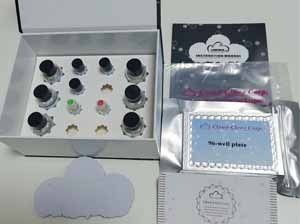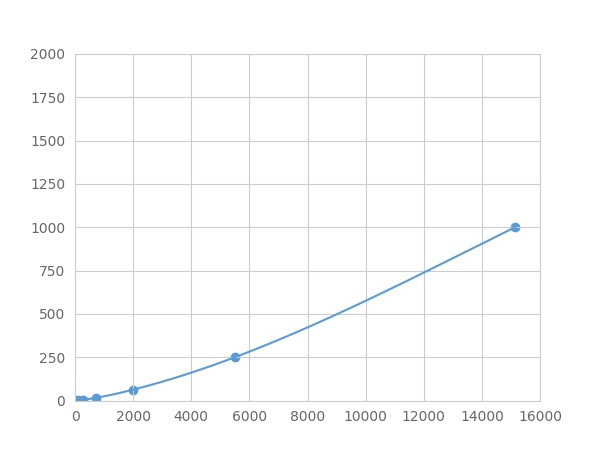Multiplex Assay Kit for Renin (REN) ,etc. by FLIA (Flow Luminescence Immunoassay) 

angiotensinogenase
(Note: Up to 8-plex in one testing reaction)
- UOM
- FOB US$ 427.00 US$ 443.00 US$ 468.00 US$ 501.00 US$ 534.00 US$ 583.00 US$ 657.00 US$ 821.00
- Quantity
Overview
Properties
- Product No.LMA889Rb
- Organism SpeciesOryctolagus cuniculus (Rabbit) Same name, Different species.
- ApplicationsFLIA Kit for Antigen Detection.
Research use only - DownloadInstruction Manual
- CategoryEndocrinologyCardiovascular biologyKidney biomarkerHormone metabolism
Sign into your account
Share a new citation as an author
Upload your experimental result
Review

Contact us
Please fill in the blank.
Recovery
Matrices listed below were spiked with certain level of recombinant Renin (REN) ,etc. by FLIA (Flow Luminescence Immunoassay) and the recovery rates were calculated by comparing the measured value to the expected amount of Renin (REN) ,etc. by FLIA (Flow Luminescence Immunoassay) in samples.
| Matrix | Recovery range (%) | Average(%) |
| serum(n=5) | 80-92 | 84 |
| EDTA plasma(n=5) | 90-101 | 96 |
| heparin plasma(n=5) | 86-101 | 93 |
Precision
Intra-assay Precision (Precision within an assay): 3 samples with low, middle and high level Renin (REN) ,etc. by FLIA (Flow Luminescence Immunoassay) were tested 20 times on one plate, respectively.
Inter-assay Precision (Precision between assays): 3 samples with low, middle and high level Renin (REN) ,etc. by FLIA (Flow Luminescence Immunoassay) were tested on 3 different plates, 8 replicates in each plate.
CV(%) = SD/meanX100
Intra-Assay: CV<10%
Inter-Assay: CV<12%
Linearity
The linearity of the kit was assayed by testing samples spiked with appropriate concentration of Renin (REN) ,etc. by FLIA (Flow Luminescence Immunoassay) and their serial dilutions. The results were demonstrated by the percentage of calculated concentration to the expected.
| Sample | 1:2 | 1:4 | 1:8 | 1:16 |
| serum(n=5) | 82-104% | 78-104% | 86-104% | 78-93% |
| EDTA plasma(n=5) | 78-104% | 88-105% | 97-105% | 97-105% |
| heparin plasma(n=5) | 81-101% | 93-101% | 90-98% | 86-105% |
Stability
The stability of kit is determined by the loss rate of activity. The loss rate of this kit is less than 5% within the expiration date under appropriate storage condition.
To minimize extra influence on the performance, operation procedures and lab conditions, especially room temperature, air humidity, incubator temperature should be strictly controlled. It is also strongly suggested that the whole assay is performed by the same operator from the beginning to the end.
Reagents and materials provided
| Reagents | Quantity | Reagents | Quantity |
| 96-well plate | 1 | Plate sealer for 96 wells | 4 |
| Pre-Mixed Standard | 2 | Standard Diluent | 1×20mL |
| Pre-Mixed Magnetic beads (22#:REN) | 1 | Analysis buffer | 1×20mL |
| Pre-Mixed Detection Reagent A | 1×120μL | Assay Diluent A | 1×12mL |
| Detection Reagent B (PE-SA) | 1×120μL | Assay Diluent B | 1×12mL |
| Sheath Fluid | 1×10mL | Wash Buffer (30 × concentrate) | 1×20mL |
| Instruction manual | 1 |
Assay procedure summary
1. Preparation of standards, reagents and samples before the experiment;
2. Add 100μL standard or sample to each well,
add 10μL magnetic beads, and incubate 90min at 37°C on shaker;
3. Remove liquid on magnetic frame, add 100μL prepared Detection Reagent A. Incubate 60min at 37°C on shaker;
4. Wash plate on magnetic frame for three times;
5. Add 100μL prepared Detection Reagent B, and incubate 30 min at 37°C on shaker;
6. Wash plate on magnetic frame for three times;
7. Add 100μL sheath solution, swirl for 2 minutes, read on the machine.

Test principle
Analyte-specific antibodies are pre-coated onto color-coded microparticles. Microparticles, standards, and samples are pipetted into wells and the immobilized antibodies bind the analytes of interest. After washing away any unbound substances, a biotinylated antibody cocktail specific to the analytes of interest is added to each well. Following a wash to remove any unbound biotinylated antibody, Streptavidin-Phycoerythrin conjugate (Streptavidin-PE), which binds to the biotinylated detection antibodies, is added to each well. A final wash removes unbound Streptavidin-PE and the microparticles are resuspended in buffer and read using the Luminex or Bio-Plex analyzer.The MFI developed is proportional to the concentration of analytes of interest in the sample.
Giveaways
Increment services
Citations
- Prenatal overexposure to glucocorticoids programs renal 11β-hydroxysteroid dehydrogenase type 2 expression and salt-sensitive hypertension in the ratPubMed: 21045727
- Recombinant human erythropoietin in humans down-regulates proximal renal tubular reabsorption and causes a fall in glomerular filtration rate Physoc: 194241
- Erythropoietin down‐regulates proximal renal tubular reabsorption and causes a fall in glomerular filtration rate in humansPubMed: 20724370
- Anti-Angiotensin and Hypoglycemic Treatments Suppress Liver Metastasis of Colon Cancer CellsKarger: 000330169
- The Angiotensin Receptor Blocker, Azilsartan Medoxomil (TAK-491), Suppresses Vascular Wall Expression of Plasminogen Activator Inhibitor Type-I Protein Potentially Facilitating the Stabilization of Atherosclerotic PlaquesLWW: 08000
- Multiple and large simple renal cysts are associated with prehypertension and hypertension.Pubmed: 23389415
- Estimation of the parameters of the renin-angiotensin-aldosterone system, water-electrolyte metabolism, and endothelial function in newborns of women with chronic hypertensionSpringer:Source
- Organ-Specific Activation of the Gastric Branch of the Efferent Vagus Nerve by Ghrelin in Urethane-Anesthetized RatsPubmed:24366191
- VSL#3 probiotic treatment decreases bacterial translocation in rats with carbon tetrachloride-induced cirrhosisPubmed:24750552
- Immunological and hemostasiological disorders in women with ovarian hyperstimulation syndromePubmed:25200828
- Age-Associated Changes in the Vascular Renin-Angiotensin System in MicePubmed:27200147
- Ablation of Potassium-Chloride Cotransporter Type 3 (Kcc3) in Mouse Causes Multiple Cardiovascular Defects and Isosmotic PolyuriaPubmed:27166674
- Reduced Expression of the Extracellular Calcium-Sensing Receptor (CaSR) Is Associated withActivation of the Renin-Angiotensin System (RAS) to Promote Vascular Remodeling in the Pathogenesis of Essential Hypertension.pubmed:27391973
- Efficacy and Safety of Renal Sympathetic Denervation on Dogs with Pressure Overload-Induced Heart Failure.pubmed:27555054
- Sacubitril/valsartan (LCZ696) Significantly Reduces Aldosterone and Increases cGMP Circulating Levels in a Canine Model of RAAS ActivationDoi: 10.1101/435560
- Gut Dysbiosis Contribute to High Fructose Induced Salt Sensitive Hypertension In Sprague-Dawley Rats
- The vascular endothelial growth factor trap aflibercept induces vascular dysfunction and hypertension via attenuation of eNOS/NO signaling in mice33303990
- Association of Ang-(1¨C7) and des-Arg 9 BK as new biomarkers of obesity and cardiometabolic risk factors in adolescents33568792
- Phosphorylation of β1-integrin in juxtaglomerular cells helps control blood pressure during the progression of diabetic nephropathy
- Bedeutung des intrarenalen Renin-Angiotensin-Systems f¨¹r die Entwicklung der chronischen Nierenkrankheit








